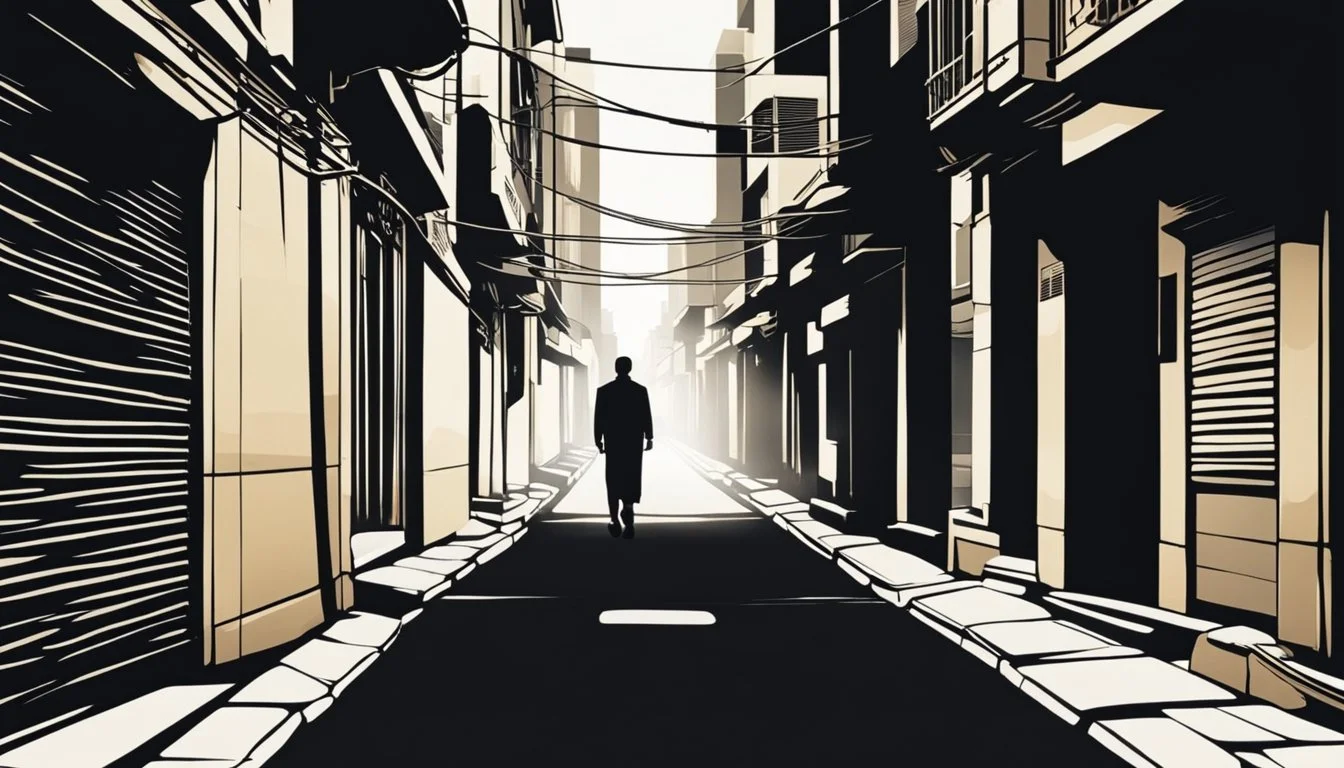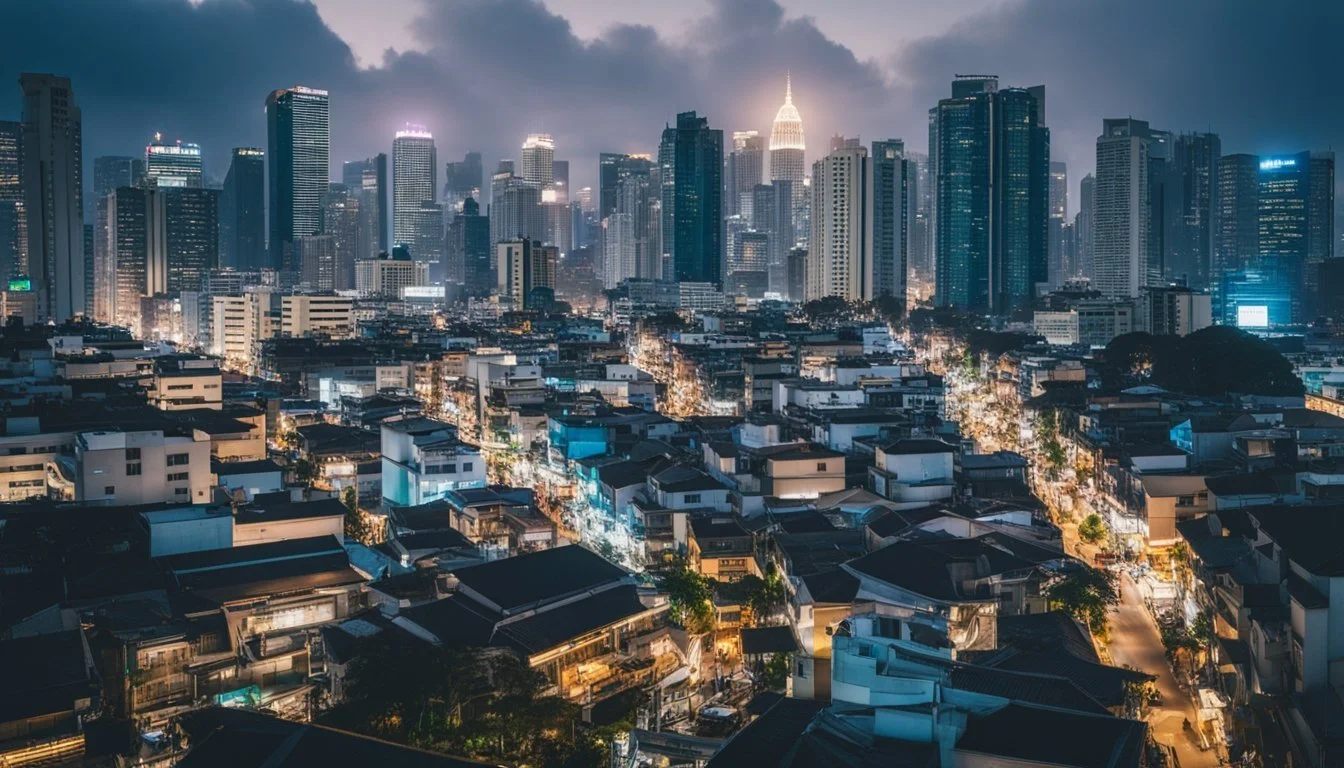8 True Crime Documentaries About Crimes in Manila You Must Watch
True crime documentaries continue to captivate viewers with their gripping tales of real-life mysteries and criminal undertakings. Manila, a city with a complex and multifaceted history, provides a rich backdrop for such stories.
What makes these documentaries compelling is their ability to shed light on the darker aspects of human nature while also providing a window into the workings of law enforcement and the justice system in the Philippines. These carefully curated films delve into various cases, offering insights that are both shocking and thought-provoking.
1) The Chiong Sisters Case (2019)
The Chiong Sisters Case revolves around the tragic events of July 16, 1997, in Cebu City. Sisters Marijoy and Jacqueline Chiong were kidnapped, raped, and murdered, causing a nationwide uproar.
Francisco Juan "Paco" Larrañaga, who held dual Filipino and Spanish citizenship, was one of the defendants. He, along with six others, was convicted and sentenced for the heinous crimes.
The trial captured significant media attention and public interest due to its controversial nature. Some people believe that Larrañaga was wrongfully accused and convicted, arguing that there was insufficient evidence against him.
This case raised many questions about the Philippines' justice system. The chaos in the courtroom on May 5, 1999, following the guilty verdict, showcased the emotional intensity surrounding this trial. Families of both the convicted men and the Chiong sisters expressed intense emotions.
For more information on The Chiong Sisters Case (2019), you can visit the Wikipedia page.
2) Delia Plaza Murders
The Delia Plaza Murders is an unsettling true crime documentary that reviews the tragic 1990 double homicide in Manila. This film delves into the complex layers of the case, including the investigation process and the public reaction.
Delia Plaza, a prominent businesswoman, was murdered along with her driver. The investigation revealed numerous potential motives ranging from personal grudges to business conflicts.
Witnesses presented conflicting testimonies, adding to the mystery. The documentary discards sensationalism to present a clear narrative of events and the subsequent legal proceedings.
The film includes interviews with close associates and law enforcement officials who were involved in the case. These first-hand accounts provide rare insights into the challenges faced by investigators.
With archival footage and detailed reenactments, the documentary paints a grim but compelling picture of the murder case. It underscores the complexities of violent crimes and the toll they take on communities.
For those interested in an in-depth examination of a landmark Manila crime, this documentary offers a gripping narrative coupled with factual reporting.
3) Ruby Rose Barrameda Case
Ruby Rose Barrameda was a young mother who disappeared in 2007. Her body was discovered in 2009, encased in cement and hidden inside a steel drum, which was dumped into the waters of Navotas City.
The prime suspects were members of her own family. This shocked the public and added layers of intrigue to the already heinous crime.
The case dragged on for years, reflecting the slow pace of the Philippine judicial system. Eventually, murder charges against the primary suspects were dropped due to insufficient evidence.
This documentary delves into the complexities of family dynamics, corruption, and the quest for justice. It's a chilling illustration of how close to home true crime can sometimes be.
For more information, visit the Ruby Rose Barrameda Case on Wikipedia.
4) Vizconde Massacre
The Vizconde Massacre remains one of the most notorious and tragic crimes in Manila's history. On June 30, 1991, members of the Vizconde family were brutally murdered in their home in Parañaque, Metro Manila.
Estrellita Vizconde, 49, was stabbed thirteen times. Her daughter Carmela, 19, suffered seventeen stab wounds and was raped. The youngest victim, Jennifer Vizconde, 7, was also murdered.
Various documentaries have examined the complexities of the case, the controversial court proceedings, and the acquittal of Hubert Webb, who was initially convicted.
One notable documentary is “Brigada Siete - Vizconde Massacre: Crime of the Century” (1991), providing in-depth coverage and analysis.
Another documentary, “The Vizconde Massacre | Crime Documentary” (1991), focuses on the investigation and interviews with key figures involved in the case.
For further information, you can read more about the Vizconde Massacre on Wikipedia.
5) Maguindanao Massacre (2010)
The Maguindanao Massacre, also known as the Ampatuan Massacre, occurred on November 23, 2009. This tragic event took place in the town of Ampatuan, Maguindanao, Philippines, where 58 individuals were brutally murdered.
Among the victims were 32 journalists, making this massacre the deadliest attack on media professionals globally.
The victims were on their way to file a certificate of candidacy for Esmael Mangudadatu, who was challenging a member of the Ampatuan political clan. The gruesome nature of the crime involved mass graves, highlighting the brutality involved.
The massacre led to multiple murder charges against members of the Ampatuan family and their associates. This documentary sheds light on the political and social implications of the massacre and the ongoing struggle for justice.
For more details on the Maguindanao Massacre documentary, check out the Wikipedia entry.
6) Jee Ick Joo Case
The crime against Jee Ick Joo, a South Korean businessman, shocked the community in Manila. On October 18, 2016, he was kidnapped by police officers and later found dead within the grounds of Camp Crame, the headquarters of the Philippine National Police.
The officers responsible for his kidnapping and murder were charged and convicted, with sentences including life imprisonment.
Jee Ick Joo's death involved appalling acts, such as his remains being cremated and his ashes flushed down a toilet. This case highlighted severe issues within the police forces and led to public outrage.
A Pampanga court sentenced a police officer and a former aide at the National Bureau of Investigation for their roles in the crime. However, the individual accused of masterminding the crime was acquitted due to the insufficient and inconsistent testimony of a government witness.
For those interested in learning more about this case and its broader implications, several documentaries and news reports provide a deeper look into the circumstances and the fallout.
For more information, you can visit the Wikipedia page on the Jee Ick Joo case.
7) Marcelo H. del Pilar's Disappearance
Marcelo H. del Pilar, a renowned Filipino writer and revolutionary, went missing under mysterious circumstances.
An active critic of Spanish colonial rule, del Pilar was known for his powerful essays and opposition to oppressive governmental practices. This made him a significant figure in the Philippine reform movement.
His disappearance in the late 19th century remains one of the most talked-about unsolved mysteries in Philippine history. Some theorize that his strong political stance led to his abduction by colonial forces.
Others speculate that he may have been targeted by rival factions within the reformist movement. Despite numerous investigations, no concrete evidence has ever been found to explain his sudden vanishing.
Del Pilar's legacy continues to inspire many Filipinos in their quest for justice and independence. His writings still resonate deeply and are studied in schools across the nation.
For those interested in true crime, the documentary on Marcelo H. del Pilar's disappearance offers a detailed look into the theories surrounding this enigmatic case.
8) Christine Silawan Case
Christine Silawan, a 16-year-old high school student, became the center of a horrifying crime in Lapu-Lapu City, Cebu. On March 11, 2019, her body was discovered in a vacant lot with multiple stab wounds. The assailant had skinned her face beyond recognition, and she had signs of sexual assault, sparking nationwide outrage.
The brutality of the crime led to widespread media coverage and public outcry. Authorities quickly moved to investigate, resulting in the arrest of Renato Payupan Llenes. The 43-year-old suspect confessed to the murder, driven by a malicious intent. The case drew attention to the issues of violence against women in the Philippines.
Christine's case has been covered in various true crime documentaries and podcasts, further highlighting the shocking nature of the crime. These documentaries delve into the investigation, the impact on the community, and the broader implications for societal safety. Read more on Wikipedia.
Historical Context of Crime in Manila
Crime in Manila has evolved through various historical phases, deeply influenced by socio-economic changes and colonial rule. This section explores the roots of crime from the colonial era to modern times and the significant impact of economic factors.
Colonial Era to Modern Times
During Spanish colonization, crimes often involved resistance against foreign rule, including rebellions and small-scale insurrections. The enforcement of harsh colonial laws resulted in severe punishments for minor offenses. As the American period began, a westernized legal system was introduced, leading to new types of crimes influenced by urbanization and modernization.
Post-independence, the rise of organized crime and political corruption became more prominent. Drug trafficking, kidnappings, and high-profile murders marked this period. Crimes in Manila during the late 20th century reflected the socio-political turmoil, especially during the Martial Law era. Presently, the nature of crime in Manila involves complexities such as cybercrime and transnational activities, influenced by the city's growing population and technological advancements.
Impact of Economic Factors
Economic disparity has been a significant driver of crime in Manila. Historically, poverty has pushed many into criminal activities as a means of survival. Informal settlements and underdeveloped urban areas often see higher crime rates, linked directly to lack of opportunities and basic services.
Manila's rapid urbanization has also led to increased crime rates due to the influx of people searching for better livelihoods. This urban migration often results in overcrowded living conditions, unemployment, and social tension, which can foster criminal behavior. The economic boom periods, while creating wealth for some, have often widened the gap between the rich and the poor, contributing to social unrest and higher crime statistics.
Notable Criminal Cases in Manila
Manila has witnessed a range of notorious criminal cases from historical incidents to recent high-profile events. Key events include tragic family murders and sensational crimes that gripped the public's attention.
Historical Cases
In 1961, Pablo Cabading, a Manila policeman, committed a brutal crime that shocked the nation. He shot his wife, daughter, and her new husband in their Makati home. This case highlighted issues within domestic settings and police conduct.
Another significant case was the 1947 Vizconde massacre, where members of the Vizconde family were brutally murdered. The complex legal proceedings lasted years, contributing to changes in Philippine criminal legislation and investigative processes.
Recent High-Profile Cases
The 2001 murder of the Chiong sisters remains highly debated. Their abduction, rape, and murder in Cebu, and the subsequent conviction of seven men, drew national attention and controversy regarding judicial processes.
In 2013, Jee Ick-Joo, a South Korean businessman, was kidnapped and killed by rogue members of the Philippine police. This case underscored issues of police corruption and led to significant public outcry and policy changes.
The stark details and unresolved questions in these cases continue to fascinate and horrify audiences, making them focal points in true crime documentaries about Manila.
Societal and Cultural Impact of Crimes
Crimes, particularly in urban areas like Manila, have significant effects on both local communities and broader media portrayals. Their impact is multifaceted, influencing not just immediate crime rates but also perceptions and behaviors.
Effects on Communities
Crimes in Manila profoundly affect communities, creating environments of fear and distrust. Local businesses often face economic downturns due to decreased foot traffic. Residents may experience heightened stress and anxiety, leading to a diminished quality of life.
Educational institutions are also impacted; schools sometimes adjust their hours or enhance security measures to protect students. Community cohesion can weaken, as neighbors become more suspicious and less likely to interact. Emergency services, such as police and healthcare, can become stretched, diverting resources from other critical needs.
Media Representation
The way crimes in Manila are portrayed by the media significantly shapes public perception. True crime documentaries often highlight the most sensational aspects, which can distort viewers' understanding of the overall crime situation.
Media focus tends to concentrate on shocking details and dramatic storytelling. This can create stereotypes or emphasize negative attributes of particular communities. Despite these issues, such programs can raise awareness about underreported crimes and justice system flaws.
Documentaries provide a platform for victims' voices and contribute to broader societal conversations around crime and justice reforms. They can serve as both entertainment and an informal educational tool, influencing public opinion and policy discussions.





